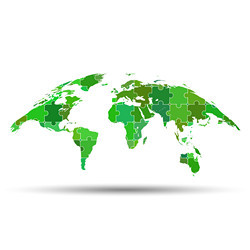What shapes the Earth's surface?
The Initial Training Network (ITN) TOPOMOD(opens in new window) (Sculpting the Earth's topography: Insights from modelling deep – surface processes) was designed for a team of researchers to investigate and model how surface processes together with crustal tectonics develop the topography of continents. TOPOMOD involved eight European research teams, five research institutions, three high-technology enterprises, and one large multinational oil and gas company. This unique network placed emphasis on providing early-stage and experienced researchers with opportunities to undertake joint research in modelling geophysical processes, Long-term collaborations among the TOPOMOD research teams were established through 15 cross-disciplinary research projects. These included numerous case studies focused on selected areas in west Africa, the Far and Middle East, the Mediterranean and South America. The adopted cross-disciplinary approach combined geophysics, geochemistry, tectonics and structural geology with advanced numerical as well as analogue modelling of geological processes from the Earth's deep mantle to its surface. The aim was to determine how these processes shape the topography of our planet. Previously believed to be independent, the synergy of these processes is critical in governing landslides, rock fall, floods, earthquakes and volcanic unrest. Long-term phenomena such as climate changes, global geochemical cycles and biodiversity evolution are also affected. Investigation of the coupling between surface and deep processes based on the analysis of physical processes operating from the single fault up to large-scale continental dynamics provided a fertile training ground for the young scientists. Specifically, it introduced them to different geoscientific disciplines. Moreover, the scientific know-how and networking experience gained during TOPOMOD provided the young researchers with working opportunities, both in academia and industry. Five fellows had found a postdoctoral position by the end of the ITN's four-year lifetime.







